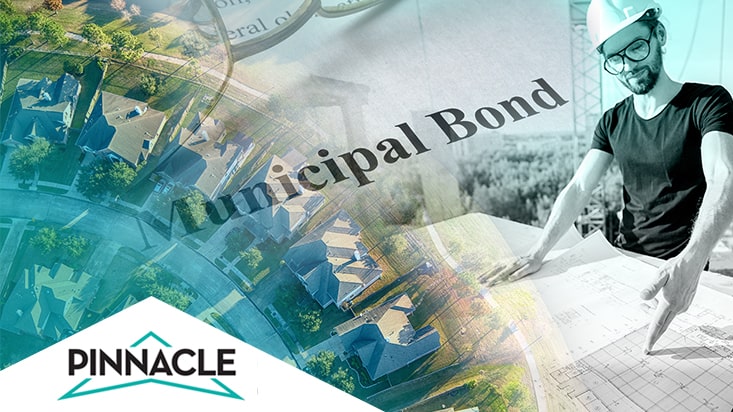Subdivision improvement bonds work in a similar way to grading permit surety bonds in that they are both performance bonds. These bonds, which are also known as subdivision performance bonds, offsite improvement bonds, payment bonds or street improvement bonds, are used by municipalities. They act as a guarantee that developers will carry out public improvement work in the vicinity of their development. They cover a wide range of different areas, such as city light installation, pavement improvements or gutter and drain maintenance.
Call: (844) 612-7238 to get started
The subdivision bond acts as an agreement between the municipality and the developer to ensure that all work is carried out as agreed. They are a legal requirement for public projects but may people also use them to give themselves peace of mind during private projects as well. The majority of surety bond carriers that issue these subdivision bonds set an initial term of 2 years. After this 2 years is up, the bond will be renewed on an annual basis until the public entity requiring the bond provides release to the surety provider.
If you are planning a public works project or a private project of any kind, we can provide your subdivision improvement bonds and walk you through the process.
How Is The Bond Amount Calculated?
 The obligee will set the amount of the subdivision bond and this will be based on a figure created by an engineer. They will assess the work that needs to be carried out and make an estimate. In most cases, there will also be a labor and materials bond to protect any subcontractors and suppliers that are involved with the project.
The obligee will set the amount of the subdivision bond and this will be based on a figure created by an engineer. They will assess the work that needs to be carried out and make an estimate. In most cases, there will also be a labor and materials bond to protect any subcontractors and suppliers that are involved with the project.
When Is There A Claim?
In any situation where the developer fails to meet their end of the agreement and work is not carried out to the agreed standard, a claim can be made against the surety. This is still the case even if it is the fault of the contractor rather than the developer themselves. So, for example, if a municipality took out sidewalk improvement bonds and the developer hired a contractor that did not complete the work to an acceptable standard, they can still make a claim.
Underwriting Considerations
Before a subdivision improvement bond can be issued, there are certain underwriting considerations that need to be made. The following important criteria must be met.
The principal (the developer) will be subject to a credit check and if they have poor credit, the bond may be rejected. Their financial resources will also be assessed to make sure that they have the capital to pay for the work that they have agreed to carry out. Although it varies depending on who is issuing the bond, most will want to see at least one and a half times the value of the bond in liquid assets. So, for example, a bond that is worth $50,000 can only be issued if the principal has at least $75,000 in available cash. This is to protect the municipality and ensure that the principal actually has the capability to carry out the work that they are agreeing to.
 The method of financing also needs to be taken into consideration. Where bonds for smaller projects, like gutter improvement bonds or drainage improvement bonds, are concerned, the principal may finance it themselves and their liquid assets will be taken into account. However, for large scale projects, it is likely that they will need a construction loan. The underwriter will want to know whether they have already secured a loan and if they have, they will ask the bank for a ‘set aside’ letter. This is an agreement from the bank that they will set aside a certain percentage of the funds so it can be used to carry out the work that is being bonded. This is to avoid a situation where a development goes over budget and the money is all used on the construction of the development rather than the improvement works that they agreed to carry out at the same time.
The method of financing also needs to be taken into consideration. Where bonds for smaller projects, like gutter improvement bonds or drainage improvement bonds, are concerned, the principal may finance it themselves and their liquid assets will be taken into account. However, for large scale projects, it is likely that they will need a construction loan. The underwriter will want to know whether they have already secured a loan and if they have, they will ask the bank for a ‘set aside’ letter. This is an agreement from the bank that they will set aside a certain percentage of the funds so it can be used to carry out the work that is being bonded. This is to avoid a situation where a development goes over budget and the money is all used on the construction of the development rather than the improvement works that they agreed to carry out at the same time.
The principal will also be asked to provide information about the contractor that they have hired, so it can be decided whether they are reliable and whether they are qualified for the job. For example, when taking out city light improvement bonds, the principal will need to find a commercial electrician that has experience in these kinds of projects, rather than a residential electrician. If the contractor has a poor reputation and is considered to be unreliable, this calls the quality of the work into question and the bond may not be issued.
The bond forms will also need to be checked for specific language that affects the principal and the surety. For example, if the developer is subject to long warranty periods, the surety may ask for the forms to be amended before agreeing to issue the bond. If the municipality will not agree to amend this language, the surety may decide that they do not want to issue the subdivision bond.
These criteria will need to be met before a subdivision bond can be issued but, depending on the size of the development and the value of the bond, more information will be required. A developer of a small condo or apartment complex won’t need to provide as much information because the value of the required bonds will be much lower. However, for large projects, developers will usually be asked to provide in-depth personal and business finances along with the other information listed above.
Subdivision Improvement Bonds At Pinnacle Surety
If you are in need of a subdivision improvement bond, our experts here at Pinnacle Surety are here to help. We have over 25 years experience providing surety bonds and we are dedicated to forging long lasting relationships with all of our clients. Unlike many of the multi-line agencies that you will find, our entire focus is on surety bonds. If you have any questions about subdivision bonds and how they work, we are here to answer them for you. Get in touch today to find out more.


